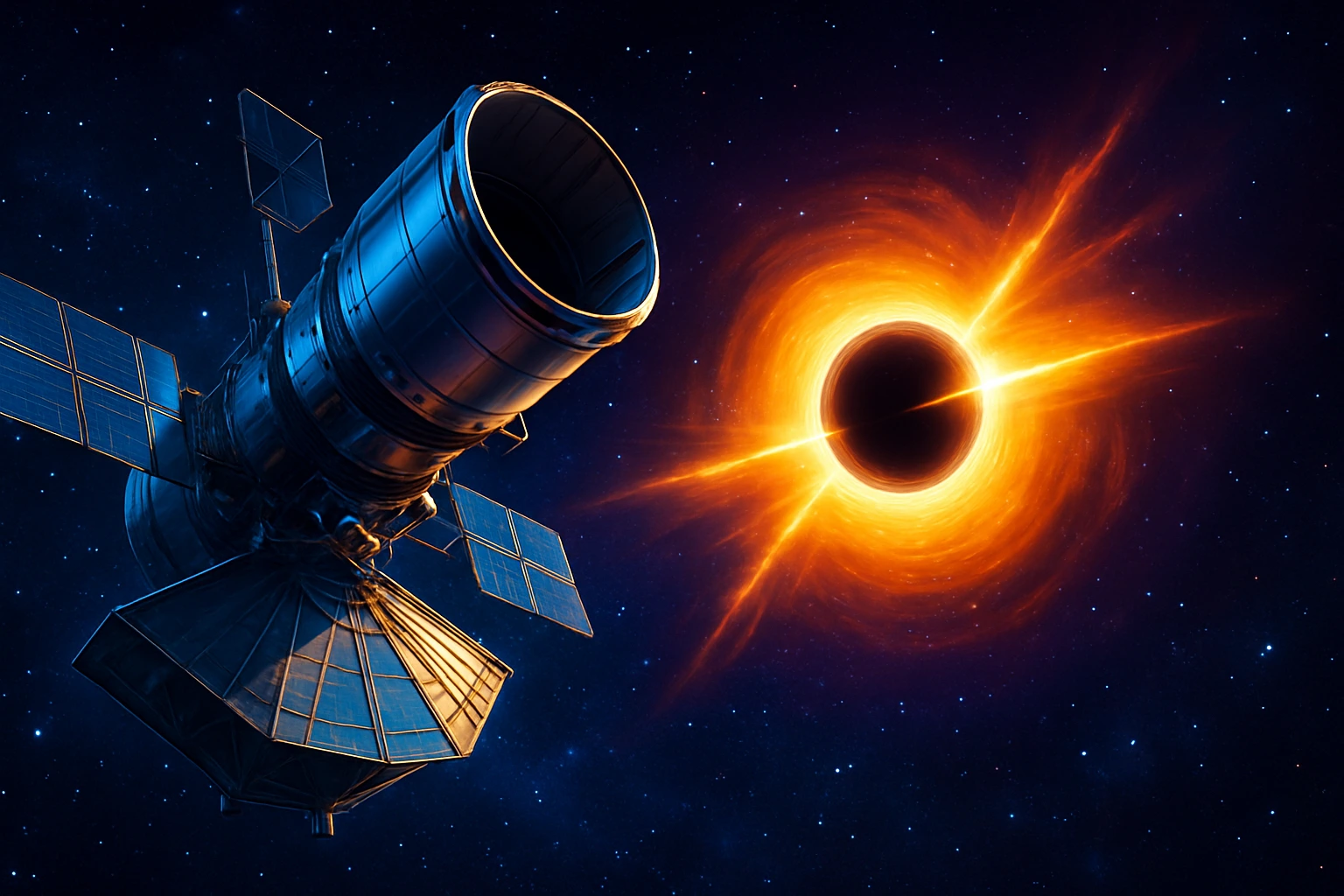India’s first dedicated space observatory, AstroSat, has once again established itself as a vital tool in exploring and understanding the mysteries of our universe. Launched in 2015 by the Indian Space Research Organisation (ISRO), AstroSat is designed to study celestial objects in the ultraviolet, optical, and X-ray wavelengths. Recently, AstroSat made an exciting breakthrough discovery that sheds light on the behavior of a fascinating black hole known as GRS 1915+105, located within our own Milky Way galaxy.
What is AstroSat?
AstroSat is India’s pioneering multi-wavelength space telescope, developed with the purpose of capturing a wide range of electromagnetic signals emitted from stars, galaxies, and exotic objects like black holes and neutron stars. Unlike Earth-based telescopes, AstroSat operates from space, free from atmospheric disturbances, which allows for much clearer and more precise observations.
Since its launch in 2015, it has been contributing valuable data to the global astronomical community, enabling scientists to observe the universe in wavelengths that are difficult or impossible to study from the ground.
The Black Hole GRS 1915+105
Black holes are regions in space with gravitational fields so strong that nothing, not even light, can escape. GRS 1915+105 is a well-known stellar-mass black hole located about 36,000 light-years from Earth, in the constellation Aquila. It is one of the most massive known stellar black holes in our galaxy and is famous for its variable X-ray emissions.
AstroSat’s Breakthrough Discovery: Rapid X-ray Flickers
AstroSat’s unique instruments detected rapid X-ray flickers coming from the environment around GRS 1915+105. These flickers are almost like light pulses that change very quickly over time. By studying these flickers, scientists have gained remarkable insights into the extreme physical conditions near the black hole’s event horizon—the very edge beyond which nothing can return.
Also read: Why Do Stars Twinkle | Class 10 Science NCERT Assam Board – CBSE – ICSE
Why Are These Flickers Important?
- Understanding Accretion: The X-ray flickers are believed to be linked to the material (typically gas and dust) spiraling into the black hole, a process called accretion. These variations help scientists learn about how matter behaves and loses energy under intense gravitational and magnetic forces.
- Extreme Environment Insights: The flickers reveal important clues about the chaotic, high-energy environment close to a black hole, where the laws of physics are pushed to their limits.
- Testing Theories: Observations like these allow astrophysicists to test and refine their theoretical models about black hole physics, including how matter behaves under strong gravity and magnetic fields.
What Makes AstroSat Special in This Research?
AstroSat’s strength lies in its combined ability to observe in different wavelengths simultaneously. This multi-wavelength approach means that it can capture complementary information about black holes and other cosmic phenomena that helps in forming a complete understanding. Infrared, ultraviolet, and X-ray data together provide a richer, deeper insight into these extreme objects.
India’s Remarkable Contribution to Space Science
AstroSat stands as a symbol of India’s achievements in space research, signaling the country’s growing presence in the global scientific community. Since its inception, it has helped answer many cosmic questions and opened new avenues for research.
The recent discovery related to GRS 1915+105 is a testament to how Indian technology can contribute to unraveling the mysteries of the universe. It highlights the innovative spirit and ambitious goals of Indian science, boosting knowledge that benefits not just the country but the entire world.
Conclusion
India’s AstroSat has provided a fresh and invaluable perspective on black holes with its detection of rapid X-ray flickers from GRS 1915+105. This finding enriches our understanding of some of the most powerful and enigmatic objects in our galaxy. As AstroSat continues to operate in space, it promises to reveal even more about the cosmos, exploring the unknown and inspiring future generations of scientists.
AstroSat’s journey is a proud milestone for India, showing how determined scientific efforts can produce discoveries that resonate throughout the universe and beyond.
Read the detail article HERE.

